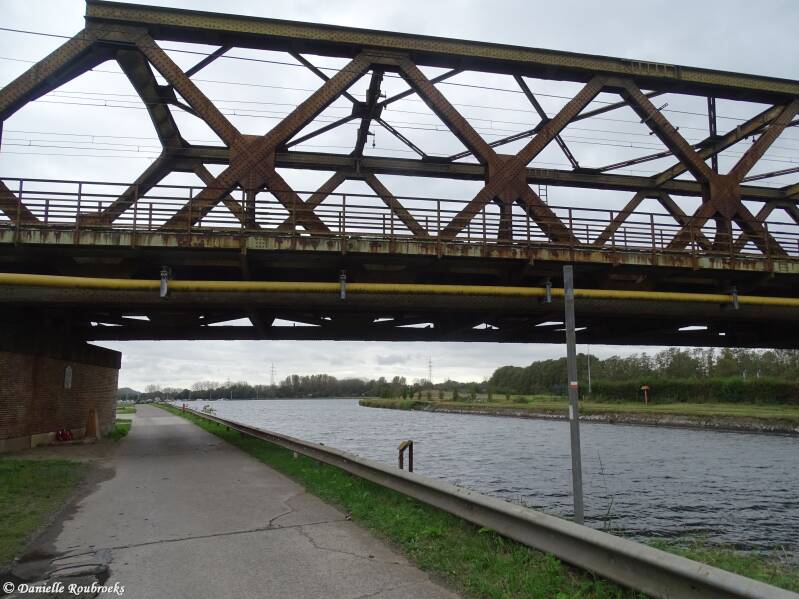Nimy VC Memorial
Memorial 4th Battalion Royal Fusiliers at the Nimy Bridge.
VICTORIA CROSS
Private Sidney Frank Godley VC
(14 August 1889 – 29 June 1957)
The first private soldier awarded the VC in World War I.
Lieutenant Maurice James DEASE
4th Bn. Royal Fusiliers
Died 23 August 1914 Age 24
Citation
Private Godley took over a machine gun on Nimy Bridge when the lieutenant in charge of the section had been mortally wounded. Private Godley held the enemy from the bridge single-handed for two hours under very heavy fire and was wounded twice. His final act was to destroy the gun and throw the pieces into the canal. His gallant action covered the retreat of his comrades, but he was eventually taken prisoner.
Godley was born on 14 August 1889 in East Grinstead, West Sussex, the son of Avis (née Newton) and Frank Godley. His mother died in 1896, and he was sent to live with his aunt and uncle in Willesden, London. He was educated at Henry Street School, St John's Wood and, upon moving to Sidcup, at Sidcup National School. From the ages of fourteen to twenty, he worked in an ironmonger's store. On 13 December 1909, he joined The Royal Fusiliers (City of London Regiment) of the British Army as a private with the service number 13814.
Godley was 25 years old, and a Fusilier in the 4th Battalion, The Royal Fusiliers, British Army, during the Battle of Mons in the First World War when he performed an act for which he was awarded the Victoria Cross. On 23 August 1914, at Mons, Belgium on the Mons-Condé Canal, Lieutenant Maurice Dease and Sidney Godley were manning the machine gun after the previous crews were either killed or wounded. When Lieutenant Dease had been mortally wounded and killed, and the order to retreat was issued, Private Godley offered to defend the Nimy Railway Bridge while the rest of the section retreated. Godley held the bridge single-handed under very heavy fire and was wounded twice. A shell fragment ("shrapnel") entered his back when an artillery shell went off near him, and he was wounded in the head by a bullet. Despite his injuries he carried on the defence of the bridge while his comrades escaped. His citation read: "For coolness and gallantry in fighting his machine gun under a hot fire for two hours after he had been wounded at Mons on 23 August".
Godley defended the bridge for two hours, until he ran out of ammunition. His final act was to dismantle the gun and throw the pieces into the canal. He attempted to crawl to safety, but advancing German soldiers caught him and took him to a prisoner of war camp. His wounds were treated, but he remained in camp until the Armistice with Germany in November 1918. Originally it was thought that he had been killed, but some time later it was found that he was a prisoner of war in a camp called Delotz at Dallgow-Döberitz. It was in the camp that he was informed that he had been awarded the Victoria Cross. Godley left the camp in 1918 after the guards fled their posts. He received the actual medal from King George V, at Buckingham Palace, on 15 February 1919.
On 2 August 1919, Godley married Ellen Eliza Norman. He worked as a school caretaker in Tower Hamlets, London. He died in Epping Hospital on 29 June 1957. He was buried with full military honours in the town cemetery at Loughton, Essex, where he latterly resided.
(Source: Wikipedia)












